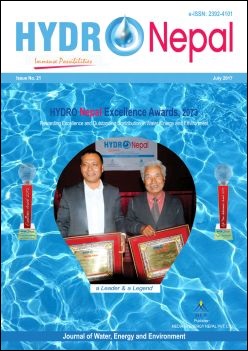3D in-Situ Stress Model of Upper Tamakoshi Hydroelectric Project Area
DOI:
https://doi.org/10.3126/hn.v21i0.17819Keywords:
Himalayan geology and tectonics, In-situ stress, 3D model, Topography, Upper Tamakoshi Hydroelectric Project, NepalAbstract
Reliable estimation of in-situ stress state is very important in implementing the shotcrete lined/ unlined tunnels and shafts. The in-situ stress state of the area of concern is mainly governed by the gravity-induced stress, tectonic activity of the earth’s crust and topographic condition of that area. The local tectonic and geological environment such as faulting and shearing activities in general influences the magnitude of tectonic stress level. The Himalayan region is renowned with its active tectonic movement (earthquake activities), which causes accumulation and sudden release of strain energy instigating changes in the stress environment. This paper aims to evaluate in-situ stress state at the Upper Tamakoshi Hydroelectric Project, where shotcrete lined/ unlined headrace tunnel with considerable hydrostatic head is being implemented. A detailed assessment of the in-situ stress state is carried out by using both measured data and three-dimensional numerical analysis using FLAC3D.
HYDRO Nepal Journal
Journal of Water Energy and Environment
Issue: 21, July, 2017
Page: 34-41
Upload Date: July 18, 2017
Downloads
Downloads
Published
How to Cite
Issue
Section
License
The copyright of the articles and papers published is held by HYDRO Nepal Journal.
The views and interpretation in this journal are those of author(s), and HYDRO Nepal does not bear any responsibility for the views expressed by authors in the journal.




